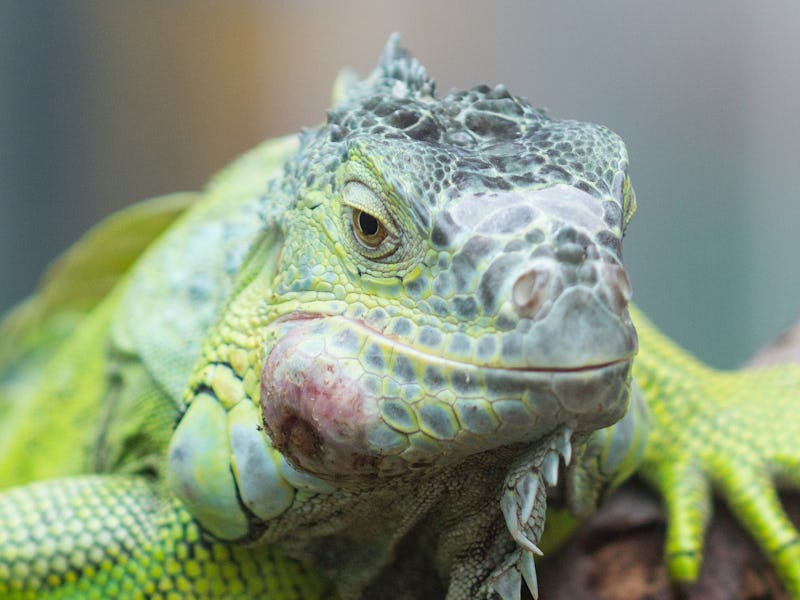Eating Iguanas Solves South Florida's Invasive Species Problem a Taco at a Time
An expert iguana hunter insists the "little dinosaurs" taking over the Sunshine State taste just like chicken.

Jackson Landers employs an old cliche to talk about eating iguanas. “They taste just like chicken,” he explains. The author of Eating Aliens: One Man’s Adventure Hunting Invasive Animal Species, Landers is an enthusiastic stalker, killer, and consumer of iguanas because he likes the taste and because he believes consuming the lizards, which have all but overrun South Florida’s homes and gardens, is in the public’s interest. As such, he’s very willing to share.
“Little dinosaurs,” as the former vegetarian and self-taught hunter calls members of the family iguanidae, have been in Florida for a long time. But that doesn’t mean every species is native. The Green Iguana and the Black Spiny-Tail Iguana are thought to have found their way to the Florida Keys via Gasparilla Island some thirty years ago, hitching a ride on South American cargo ships bringing fruit stateside. Other local myths suggest irresponsible pet owners brought them over from Mexico, where they originate. Either way, the massive lizards, which can swim far and walk farther, have spread out on the mainland.
Believe it or not, this leathery freak makes a damn good taco filling.
Far removed from their natural ecosystems, Green Iguanas and the Black Spiny-Tail Iguanas have no natural predators, parasites, or diseases to keep them in check. Now, with their collective population estimated at over 10,000 wildlife-razing individuals, both species are mowing down local flora and fauna and terrorizing homeowners. “Those are eventually going to be a bigger problem,” Landers says, referring to the more dangerous black spiny-tails, “but sooner or later those two populations are probably going to overlap.”
For Landers, the solution is obvious: Eat the damn things. We’re past the point where we can afford to be picky about where our meat comes from, he explains; invasive species cause irrevocable damage to the natural environment, and traditional meats are becoming increasingly costly to farm. Besides, he says, iguana is delicious.
“It’s not a strong, weird taste. There’s nothing all that funky about it. The texture is just a little bit crab-like, is all,” he says. “Anything with chicken you can do with iguana.” He prefers to stuff them into tacos, which is similar to how they’ve been eaten in Central and South America for thousands of years.
A handful of Floridians have thought the same thing, serving up iguana meat at hyper-niche restaurants and food festivals around the state. But if the goal is to eat our way through the population, iguana hunting is going to have to scale up.
Unfortunately, the government isn’t ready for a nation of iguana eaters, regardless of demand. “I’m not aware of any legal prohibition against selling it within Florida,” Landers says, “but when you want to commercialize a wild meat, the problem is you run right into the USDA.” The USDA requires that meat sold across state lines has to be killed in a USDA-inspected slaughterhouse. And there’s no such thing as a USDA-inspected slaughterhouse equipped to handle iguanas. That facility could be built, but capturing iguanas live and transporting them to be processed would remain completely impractical and largely pointless.
Until the USDA loosens its restrictions on eating wild meat or the iguanas pose a full takeover — whichever comes first — Landers suggests homeowners take matters into their own hands. “Most of what’s really been effective at removing them is shooting them one at a time, with a pellet gun or bullet through the brain,” he says casually. But more importantly, he warns, don’t let ignorance get in the way of deliciousness.
“If you tried to put it in the grocery store, people would say, ‘I don’t know how to cook with that,’ even though they do,” he says. “They just don’t know that they do.”